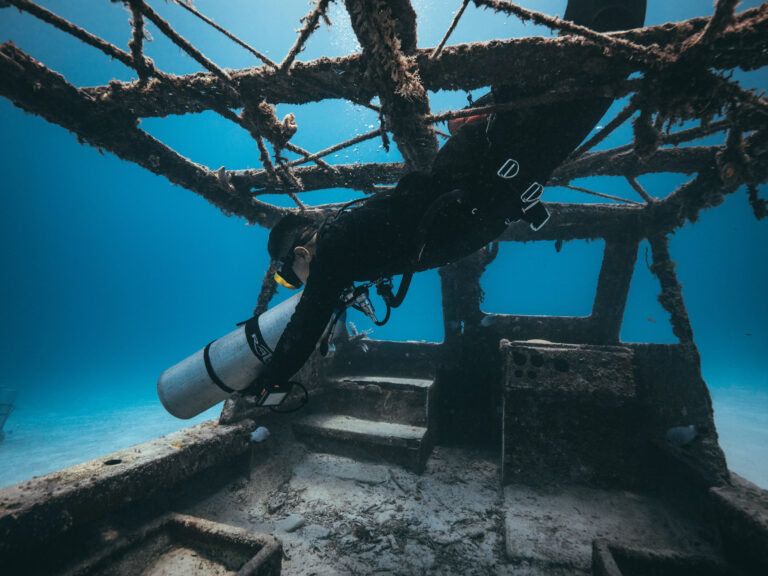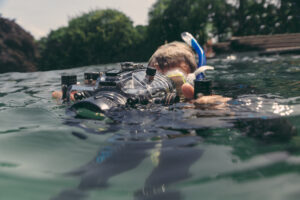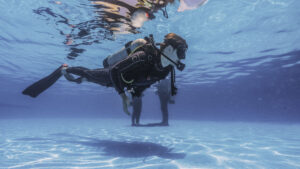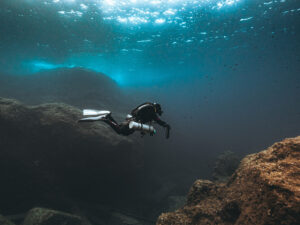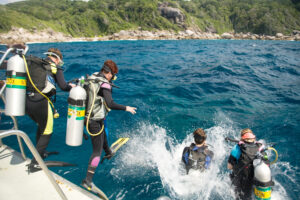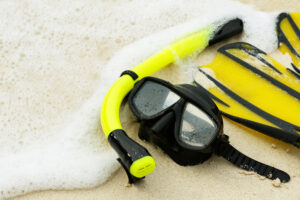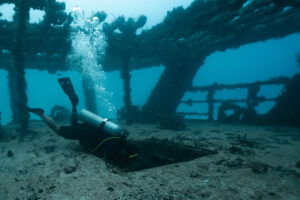What is a Buddy Line?
The buddy line, also known as a buddy tether, is a critical piece of scuba diving equipment designed to enhance diver safety and communication. It is a short line, typically between 3 and 6 feet (1 and 2 meters) long, that connects two divers underwater, helping them maintain contact during a dive. This essential tool is particularly useful in situations with poor visibility, strong currents, or other challenging conditions where divers might become separated and struggle to quickly locate one another. The buddy line not only improves communication between divers but also serves as a vital tool for mutual assistance and support in emergencies.
History and Development
The concept of the buddy line traces its roots back to the early days of scuba diving when divers realized the importance of maintaining close proximity and communication with their dive partners. Early versions of buddy lines were often improvised from rope or webbing. Over time, as scuba diving gained popularity and equipment evolved, commercial buddy lines were developed with specialized materials and features designed to improve functionality and ease of use.
Materials and Construction
Buddy lines are made from a variety of materials, including nylon, polypropylene, and bungee cords. The choice of material depends on the desired balance between flexibility, strength, and buoyancy. Nylon and polypropylene are popular choices due to their strength and resistance to degradation in saltwater environments. Bungee cords are valued for their elasticity and ability to absorb shock, reducing the risk of tugging or pulling on a diver’s gear.
A buddy line typically features two swivel clips or carabiners, one at each end, which attach to the divers’ buoyancy control devices (BCDs) or harnesses. Some buddy lines also include quick-release buckles for added safety and convenience, allowing divers to separate quickly if necessary. The line itself may be flat or tubular, with tubular designs providing additional buoyancy and resistance to tangling.
Usage and Benefits
Using a buddy line can significantly enhance diver safety, communication, and overall dive experience. The primary benefits of a buddy line include:
Enhanced visibility
The buddy line helps divers maintain contact in conditions where visibility is limited, such as in murky water, night dives, or during a silt-out.
Improved navigation
The buddy line allows divers to stay together while navigating through complex environments, such as wrecks, caves, or kelp forests, reducing the risk of separation and disorientation.
Strong current management
In areas with strong currents or surges, a buddy line helps divers stay together, minimizing the risk of being swept apart.
Emergency assistance
In the event of equipment failure or other emergencies, a buddy line enables divers to remain close and provide immediate assistance to one another.
Training and mentoring
For beginner divers or those learning new skills, a buddy line can provide additional support, guidance, and reassurance by keeping the divers connected.
Limitations and Safety Considerations
While buddy lines provide numerous benefits, they also have limitations and require proper usage to ensure safety. Some considerations include:
Entanglement risk
The line can become entangled with other equipment or underwater structures if not managed carefully. Divers should maintain awareness of their surroundings and monitor the line’s position throughout the dive.
Restriction of movement
The buddy line can limit a diver’s range of motion, particularly in tight spaces or when maneuvering around obstacles. Divers should practice using the line and be prepared to disconnect if necessary.
Proper attachment
Divers should ensure that the buddy line is securely attached to their BCD or harness and that the attachment points are easily accessible in case of an emergency release.
Buddy compatibility
Divers using a buddy line should have compatible diving skills and experience levels, as well as similar objectives and interests for the dive. This compatibility ensures that both divers can effectively communicate and assist one another if needed.
Communication
Divers connected by a buddy line should establish a set of hand signals or other non-verbal communication methods to convey messages and alerts during the dive. This communication is crucial in maintaining situational awareness and addressing any issues that may arise.
Monitoring
Regularly checking on your dive buddy and maintaining visual contact, even when using a buddy line, is essential. A buddy line should not be a substitute for attentive buddy checks and communication throughout the dive.
Line length
The length of the buddy line should be carefully considered, as a line that is too long can create drag and increase the risk of entanglement, while a line that is too short can restrict movement and create tension between the divers.
Training and Best Practices
While using a buddy line is relatively straightforward, proper training and practice are essential to ensure safe and effective use. Dive training organizations and local dive shops often offer specialized courses or workshops focused on buddy line usage and techniques. Key best practices include:
Familiarization
Before using a buddy line, divers should familiarize themselves with its features, such as attachment points and release mechanisms, and practice connecting and disconnecting the line on land.
Pre-dive planning
Divers should discuss their dive plan, including objectives, communication methods, and contingency plans, and ensure that both divers are comfortable with the use of the buddy line.
Practice
Regularly practicing with a buddy line, particularly in controlled environments such as pools or shallow dives, can help divers build the skills and confidence necessary to use the line effectively in more challenging conditions.
Equipment maintenance
Like all scuba diving equipment, buddy lines should be regularly inspected for signs of wear or damage and replaced as needed.
Adaptability
Divers should be prepared to adapt their techniques and plans based on changing conditions or unexpected challenges during the dive. This adaptability includes being ready to disconnect the buddy line if it becomes a safety hazard or impediment.
Key Takeaways
The buddy line is an invaluable tool for scuba divers, offering improved safety, communication, and support during dives, particularly in challenging conditions. By understanding its proper usage, limitations, and best practices, divers can incorporate the buddy line into their dives, fostering a stronger sense of teamwork and camaraderie while exploring the underwater world.

